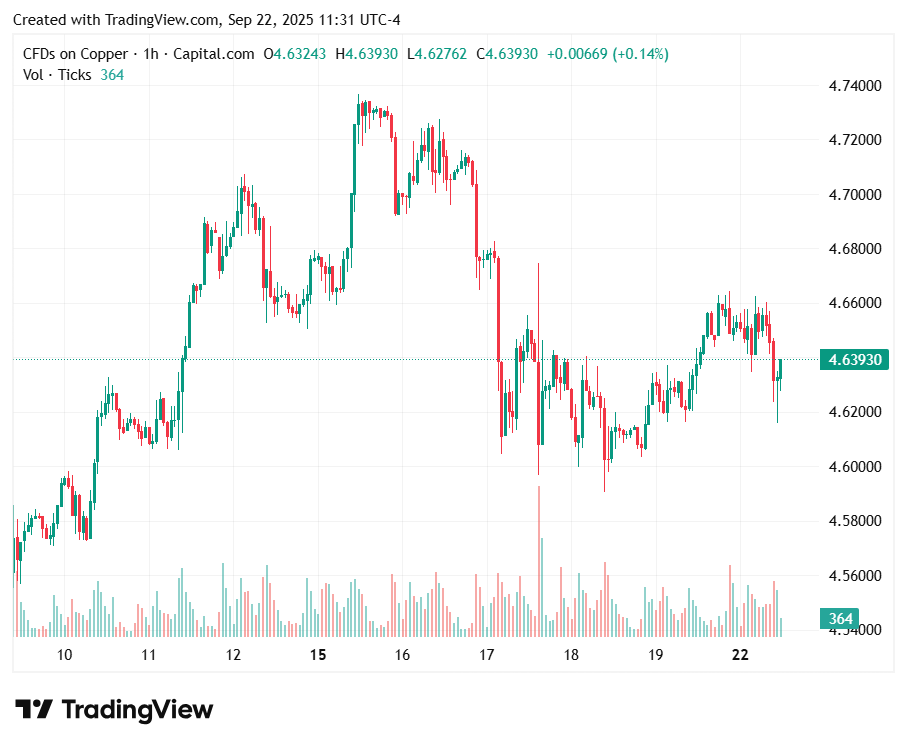Copper Prices Remain Firm as Grasberg Mine Closure Tightens Supply Outlook
Copper markets maintained their strength in early-week trading as uncertainty surrounding operations at one of the world’s largest copper mines continues to influence the supply-demand balance. Three-month copper futures on the CME traded above $10,000 per ton ($4.61 per pound) on Monday, with only a slight 0.3% dip from previous levels. London markets showed similar resilience, with prices hovering just below the $
...
Copper Prices Remain Firm as Grasberg Mine Closure Tightens Supply Outlook
Copper markets maintained their strength in early-week trading as uncertainty surrounding operations at one of the world’s largest copper mines continues to influence the supply-demand balance. Three-month copper futures on the CME traded above $10,000 per ton ($4.61 per pound) on Monday, with only a slight 0.3% dip from previous levels. London markets showed similar resilience, with prices hovering just below the $10,000 per ton threshold.
Market stability is largely attributed to ongoing concerns about Indonesia’s Grasberg mine, operated by Freeport McMoRan, which has been shuttered following a tragic mud flow accident earlier this month. The incident, which occurred approximately two weeks ago, trapped seven workers underground.
In a somber update on Monday, Freeport confirmed that rescue teams had recovered the bodies of two workers, while five others remain missing. The company announced that operations will continue to be suspended while search and recovery efforts proceed, providing no timeline for when production might resume.
The Grasberg mine’s significance to global copper supply cannot be overstated. As the world’s second-largest copper producer, the extended shutdown raises critical questions about market balance in the coming months. The closure comes at a particularly sensitive time for copper markets, which have already been grappling with supply constraints throughout 2025.
“The Grasberg situation represents a substantial risk to global copper output if the shutdown extends beyond a few weeks,” noted a commodities analyst at a major investment bank who requested anonymity. “With limited buffer in the system due to years of underinvestment in new projects, even short-term disruptions can have outsized impacts on price.”
Supply limitations have been a key factor supporting copper’s strong performance this year. Industry experts point to a combination of technical challenges at existing mines, political uncertainty in major producing regions, and insufficient development of new projects as factors constraining output growth despite rising demand.
Citigroup’s metals research team recently issued a forecast suggesting copper prices will likely maintain their current levels through the remainder of 2025 before potentially climbing toward $12,000 per ton in 2026. This projection is based on expectations that demand drivers—particularly electrification initiatives, renewable energy infrastructure, and electric vehicle manufacturing—will continue to strengthen while supply struggles to keep pace.
The industrial metal’s role in the global energy transition remains a fundamental pillar of its long-term demand outlook. Copper’s superior electrical conductivity makes it essential for everything from wind turbines and solar arrays to battery storage systems and charging infrastructure.
Meanwhile, inventory levels at major exchanges remain relatively tight, providing little cushion against production disruptions like the one at Grasberg. LME warehouse stocks have been trending downward in recent months, reflecting the market’s underlying tightness.
For Freeport McMoRan, the Grasberg incident represents both a human tragedy and a significant operational challenge. The company has been investing heavily in underground expansion at the site in recent years, transitioning from open-pit operations to block-cave mining techniques.
As the situation continues to unfold, traders and analysts will be watching closely for any signals about when the mine might resume operations. In the meantime, copper’s price remains elevated compared to historical averages, reflecting both current supply constraints and the market’s long-term positive outlook.
Industry observers note that copper’s price trajectory in the coming months will likely depend on whether other major producers can increase output to compensate for Grasberg’s absence, as well as the resilience of demand in the face of ongoing global economic uncertainties.


